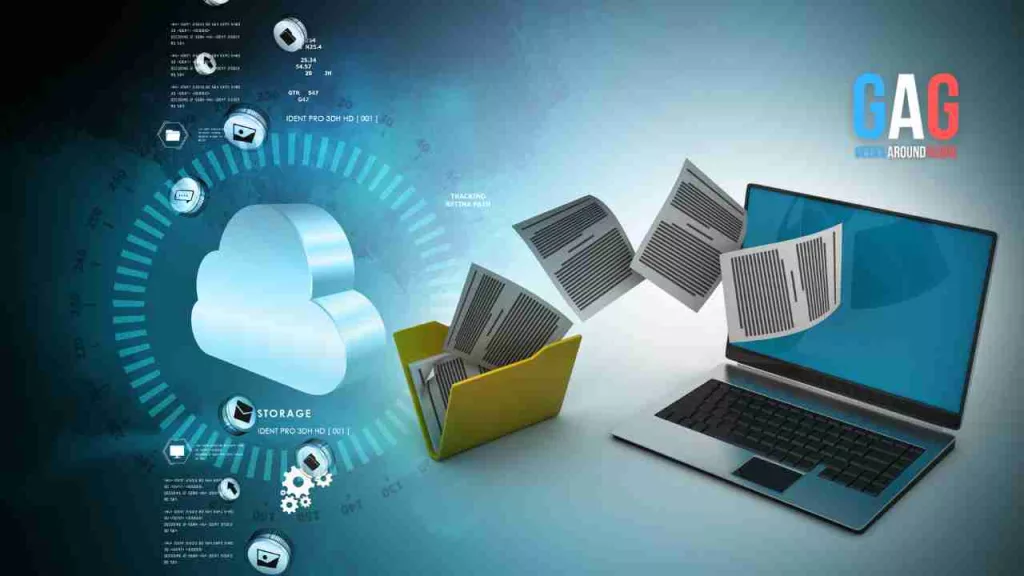All You Need To Know About File Encryption Systems

You need tried-and-true methods to keep your files safe because your organization deals with sensitive information daily. About 32% of all businesses are hit by cybercrime each year, and the total damage to society can reach $6 trillion. You can protect your business from this threat with robust security measures that are affordable and compatible with your current infrastructure.
Encryption file systems are a top-notch security measure. When coupled with cutting-edge security procedures, file encryption systems provide your company with all-encompassing file information protection. However, how exactly does file encryption function to safeguard your private information? And what exactly is an encrypted file anyway?
Learn more about this subject through this comprehensive guide.
What is a file encryption system?
File encryption systems can seamlessly encrypt files to ensure safe transmission and storage of information. Malicious actors cannot access or tamper with the data because the content is encoded. This feature ensures that anybody other than the designated recipient(s) cannot access a file.
If you’re in the biological sciences, for example, you could want trustworthy methods to prevent your competitors from obtaining your patents for ground-breaking drugs or innovative designs. On the other hand, maybe you’re a member of the media who needs dependable methods to conceal the most recent script from prying eyes. Perhaps you are employed in a field that requires clients to entrust you with their personal information, such as law, finance, or other similar delicate files.
A user-friendly file encryption system ensures that sensitive files with critical and private information are protected in your business. You can be sure that no one other than approved users may read your sensitive data.
Various forms of security
File encryption changes information into a secret code using special encryption methods and unique random keys, keeping confidential data safe. It’s like putting a lock on a box to protect what’s inside.
The best file encryption systems available make it even harder for unauthorized people to get access. There are different ways to do this coding to keep your important files safe and secure.
Symmetric or shared key encryption
The first and the most basic type of encryption is Symmetric encryption. This involves using just one key to encrypt and decrypt the information. In other words, the sender and receiver of the information that is symmetrically encrypted always use the same key. Since this approach is fast and easy to use, it is popular and shared among users.
Asymmetric encryption
Unlike symmetric encryption, where only one key is used, asymmetric encryption utilizes two keys. The first is an encryption key, while the second is a decryption key. Nonetheless, it ensures that decryption of the sender’s encrypted file is only possible using both keys.
Hybrid encryption
As the name suggests, hybrid encryption combines the advantages of symmetric and asymmetric techniques to increase security and speed performance. This method encrypts actual data using rapid and efficient symmetric encryption, which is protected by asymmetric encryption while sending it to other users.
With this method, the strength of asymmetric encryption—which guarantees the secure exchange of keys—is combined with the speed of symmetric encryption for encrypting massive volumes of files.
Why is it important to encrypt files?
Information files at rest can be protected through the use of encryption, which can reduce cybersecurity risks and protect businesses from various threats.
Attempted Fraud
As a typical component of cyberattacks, users’ and applications accounts are often hacked. Passwords to user accounts can be obtained by cybercriminals through phishing, tampering with credentials, or other methods. On the other hand, an attacker may get total administrative access to a company system by exploiting a security hole in an application. A file encryption system will protect files from access by hackers if they enter your network and gain control.
Encryption permission management is crucial to ensuring the security of business files in these situations. The attacker may access any file as long as the compromised account can. Almost all compromised files on the system are vulnerable if the root or admin account is hacked.
A file encryption system can provide an additional layer of protection against this kind of assault. An attacker requires both the file and the decryption keys to decrypt a file. Encryption keys should only be accessible to individuals with a legitimate business need for them, which may or may not align with the group with administrative privileges on the encryption system. An organization’s cyber risk is reduced, and an extra layer of protection against data leaks is provided by using an encryption file system with user decryption control.
Storing Data on the Cloud
The migration of critical apps and private data to the cloud is a growing trend among businesses. Security is an issue with cloud-based installations despite their many benefits over conventional on-premises data centers.
The risks of insufficient cloud security are magnified because they differ significantly from in-house conventional cybersecurity and are accessible over the public Internet. Consequently, there has been a consistent rise in data breaches related to cloud storage as the use of the cloud has increased. Ensure that the file encryption system you plan to install in your business can automatically encrypt files BEFORE uploading them to a cloud service for storage.
Items Misplaced or Stolen
The use of mobile devices for business purposes is increasing among employees. The COVID-19 epidemic sparked a dramatic increase in telecommuting and the usage of private and mobile devices, and this trend has only grown in popularity since then.
Besides, cybersecurity risks are growing in tandem with using such mobile devices. Any public area is a potential target for the theft or loss of a mobile device, tablet, or laptop. If this happens, the criminal may scan the device’s hard disk and steal confidential corporate files. It is critically important that the file encryption system includes a secure mobile app capable of decrypting files received via the Internet or Wi-Fi networks. In addition, ensure that the decrypted files are not stored on the device and are blocked from being forwarded by email or other running messaging apps.
In the end!
In today’s linked world, file encryption systems are a must-have tool for protecting sensitive information and keeping information secure when sent between computers and mobile devices. Additional precautions like robust passwords, access controls, and data backups should be seriously considered when choosing a file encryption system for your business.



